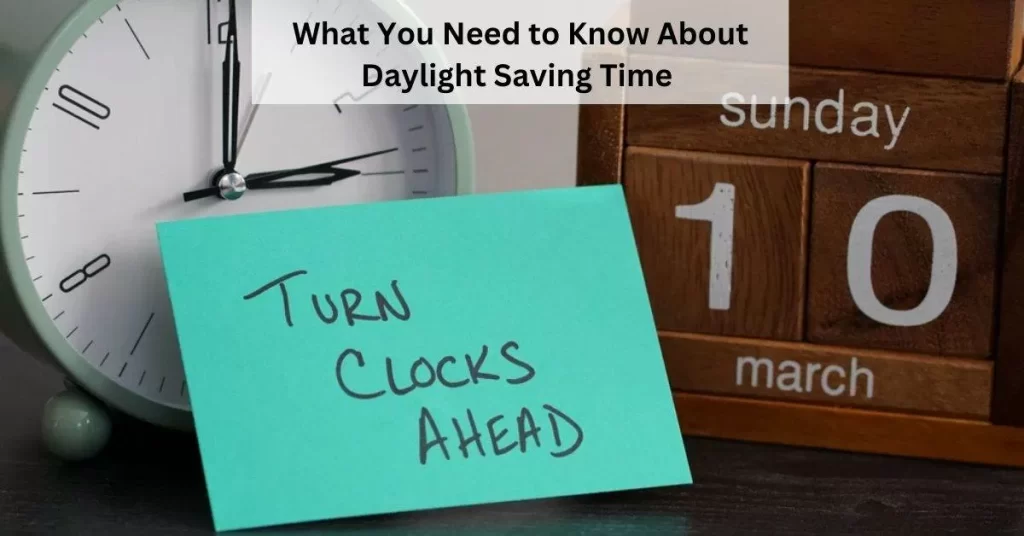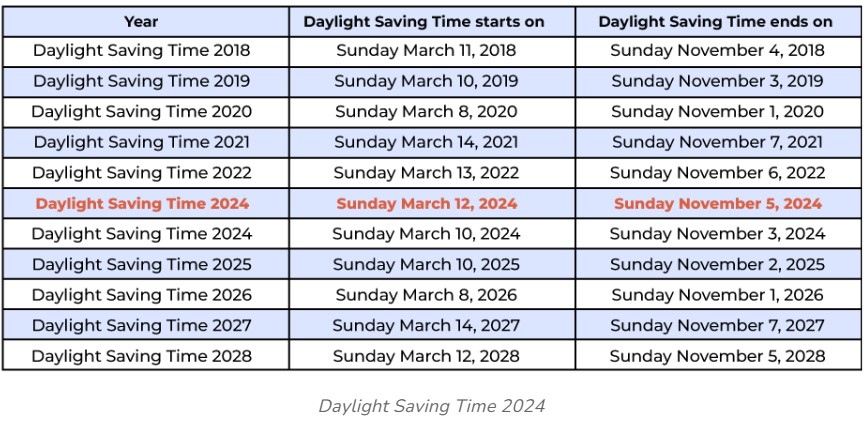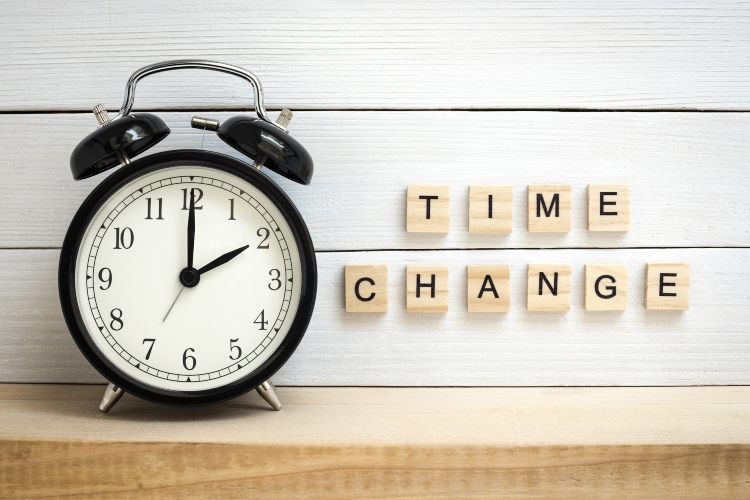Daylight Saving Time (DST) is an annual practice of moving the clocks forward by one hour during the warmer months to extend evening daylight. In 2024, knowing the specific dates for the time change is crucial for adjusting schedules and maintaining routines. The clock changes affect various aspects of daily life, from personal health to business operations. This article explores when the clocks fall back and why we observe this time adjustment.
When Does Daylight Saving Time Start and End in 2024?
In 2024, Daylight Saving Time begins on Sunday, March 10th, when clocks are set forward by one hour at 2:00 a.m. This adjustment is often referred to as “springing forward.” The fallback daylight savings occurs on Sunday, November 3rd when clocks are set back by one hour at 2:00 a.m. to mark the end of DST. During this time change in fall 2024, most regions will “gain” an hour of sleep as the clocks “fall back.” Understanding these changes is essential for preparing for the shift in time.

when does Daylight Saving Time in 2024
History of Daylight Saving Time
The concept of Daylight Saving Time has a long and complex history, first proposed by Benjamin Franklin in 1784 as a way to save energy by making better use of daylight. The idea was officially adopted by various countries during World War I and II to conserve fuel. The United States formally standardized DST with the Uniform Time Act of 1966. In 2007, the schedule was adjusted to extend the period of DST, starting in early March and ending in early November. This history highlights the evolving nature of DST and its role in modern society.

Early History of Daylight Saving Time
Why Do We Observe Daylight Saving Time?
The primary purpose of Daylight Saving Time is to make better use of daylight during the longer days of spring, summer, and early fall. By shifting an hour of daylight from the morning to the evening, DST aims to reduce energy consumption and promote outdoor activities during daylight hours. Despite these intended benefits, there are debates about whether DST truly conserves energy or improves safety, with some arguing that the disruption to sleep patterns outweighs the advantages.
Which States and Territories Do Not Observe DST?
While most U.S. states observe Daylight Saving Time, there are notable exceptions. Hawaii and most of Arizona do not participate in DST, choosing to remain on standard time throughout the year. Several U.S. territories, including Puerto Rico, the Virgin Islands, Guam, and American Samoa, also do not observe DST. These regions have opted out due to their geographic location or other considerations, such as a minimal difference in daylight hours throughout the year.
How Daylight Saving Time Affects Daily Life
The time change can significantly impact daily life. The shift in clocks can disrupt sleep patterns, leading to tiredness and decreased productivity. Businesses may also feel the effects, particularly those in sectors like finance and travel, where precise timekeeping is crucial. On the positive side, extended daylight hours can promote outdoor activities and reduce energy use in the evenings. However, adjusting to these changes can be challenging for many people, especially during the transition periods in spring and fall.
How to Adjust to the Time Change
Adapting to the Daylight Savings Time change can be easier with a few practical strategies. Gradually adjusting your bedtime by 10-15 minutes in the days leading up to the change can help your body adapt. Exposure to natural light in the morning and maintaining a regular sleep schedule can also ease the transition. Limiting caffeine and screen time before bed is another effective method for managing sleep disruptions caused by the time shift. Preparing for the clocks fall back in the fall can help mitigate the effects of lost or gained sleep.
Arguments For and Against Daylight Saving Time
There are several arguments both for and against Daylight Saving Time. Proponents argue that DST conserves energy, reduces traffic accidents, and encourages outdoor activities during extended daylight hours. However, critics point to studies suggesting minimal energy savings and note the potential health risks associated with disrupting the body’s natural sleep cycle. Some also argue that DST can create confusion and inconvenience, particularly for businesses and travelers.
Frequently Asked Questions About DST
Many questions surround the practice of Daylight Saving Time. Common inquiries include “Why do we still observe DST?” and “How does DST affect sleep?” Additionally, there is confusion about when the time change occurs and how to remember whether to move the clocks forward or backward. A helpful mnemonic is “spring forward, fall back,” which indicates the direction to set the clock during the time changes in spring and fall.
Conclusion: Preparing for Daylight Saving Time 2024
As we approach Daylight Saving Time 2024, it’s essential to be prepared for the upcoming time change. Understanding the specific dates and impacts of DST will help manage the adjustments more smoothly. Whether you view DST as a beneficial tradition or an outdated practice, the transition periods in March and November remain important events on the calendar, affecting our routines, schedules, and overall well-being.





